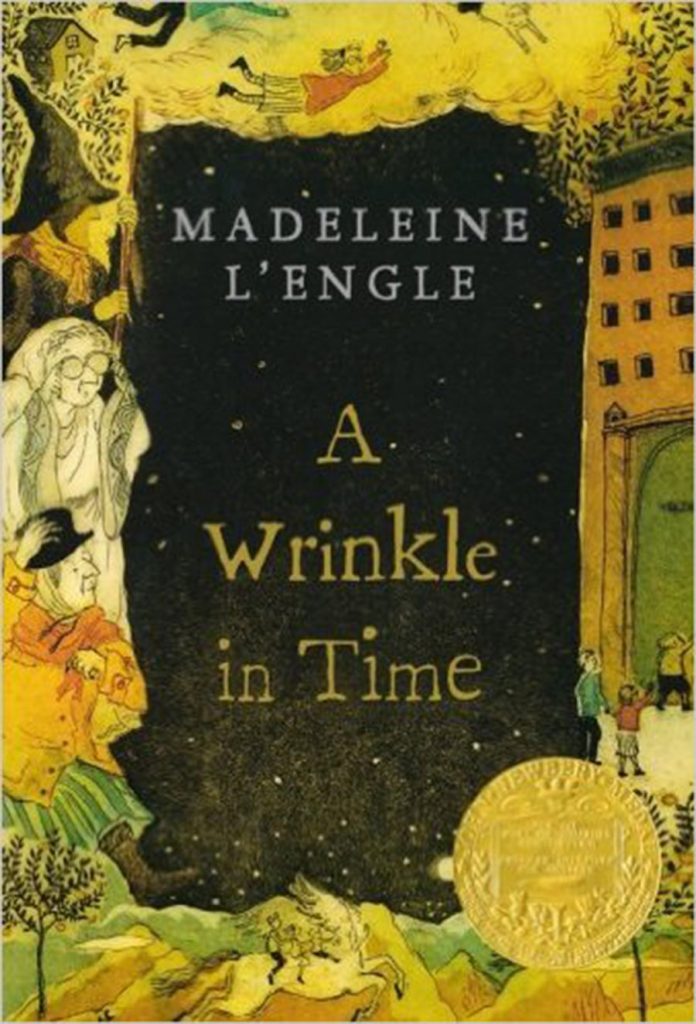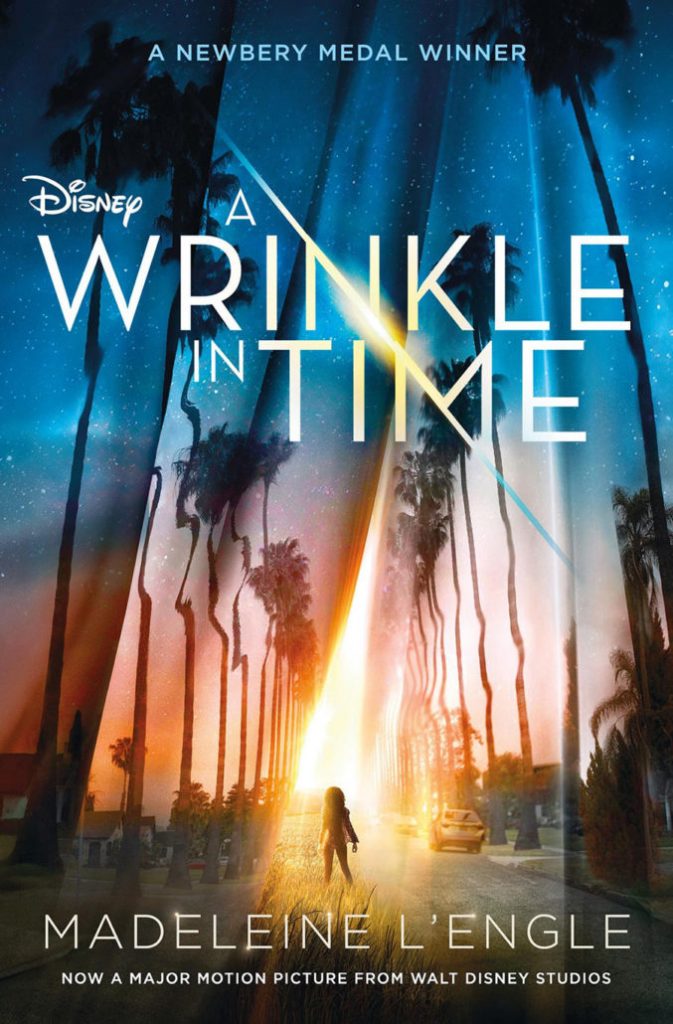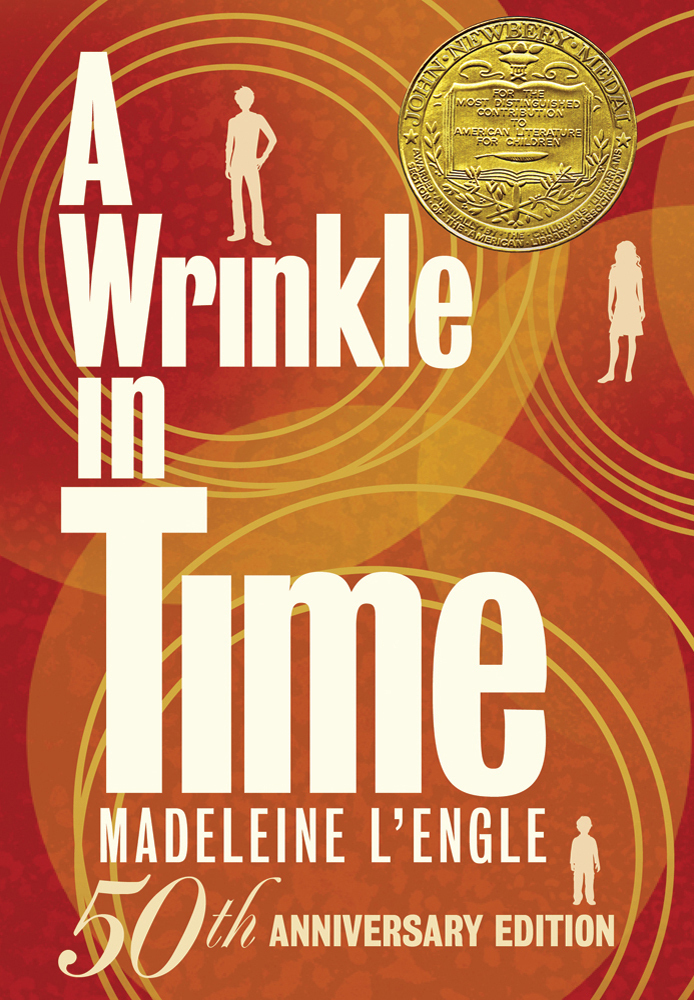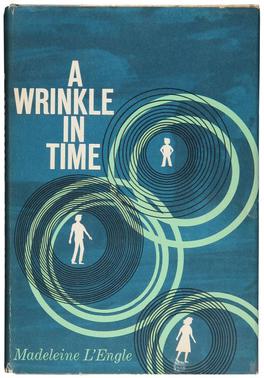Madeleine L’Engle’s award winning children’s novel A Wrinkle in Time follows 13-year-old Meg Murry on her journey to rescue her father. Meg, her brother Charles Wallace, and her friend Calvin O’Keefe, travel through time and space with the help of supernatural beings and battle the evil “IT” holding her father captive. It is the first novel in L’Engle’s Time Quintet, followed by A Wind in the Door, A Swiftly Tilting Planet, Many Waters, and An Acceptable Time. It also features characters that recur in other L’Engle books, such as the O’Keefe family series.
First published in 1962, A Wrinkle in Time won the 1963 Newbery Medal and has been in continuous print since its first edition. It also received the Lewis Carroll Shelf Award and the Sequoyah Children’s Book Award, both in 1965. Special editions were printed in 1987 and 2012 for the book’s 25th and 50th anniversary. It was adapted into a major motion picture by Walt Disney Pictures in 2018, a television movie in 2003, and a graphic novel illustrated by Hope Larson in 2015.
Despite its general praise and popularity, A Wrinkle in Time has faced several challenges and attempted bans. It was ranked #23 on the American Library Association’s (ALA) 100 most frequently challenged books from 1990-1999, and #90 on the ALA’s list from 2000-2009. These challenges focused mainly on the book’s blend of religion, the supernatural, and science, and has been criticized both for being too religious and for being not religious enough. It makes overt Biblical references, with one character quoting directly from 1 Corinthians 1:27-29, and promotes an ecumenical perspective of unity among Christian churches. However, it also expresses the idea that the phenomena of religion, magic, and science are often the same thing viewed from different perspectives.
In 1985, it was challenged by a parents’ group at Polk City Elementary School in Florida. The parents charged that the book “opposes Christian beliefs and teaches occult practices,” but the school principle ruled against removing it from the fourth-grade curriculum. In 1990, a parent at Tenth Street Elementary School in Anniston, Alabama requested the book be removed because it “sends a mixed signal to children about good and evil” and “[lists] the name of Jesus Christ together with the names of great artists, philosophers, scientists, and religious leaders when referring to defenders of Earth against evil.” The superintendent of the school and the Anniston City Board of Education voted unanimously to deny the request. The book was also challenged in Newton, North Carolina in 1996 for undermining religious beliefs. The Catawba County School Board in Newton chose to keep the book in school libraries.
In an interview with the New York Times in 2001, L’Engle responded to the attempted bans, saying, “It seems people are willing to damn the book without reading it. Nonsense about witchcraft and fantasy. First I felt horror, then anger, and finally I said, ‘Ah the hell with it.’ It’s great publicity, really.”
About the Author
Madeleine L’Engle Camp is an American author born in 1918. Before her career as a novelist she wrote plays and had small acting roles in New York. Her first novel, The Small Rain, was published in 1945. Along with her award-winning Time Quintet, she wrote several other middle grade series, stand-alone young adult books, poetry, plays, and adult fiction. Along with fiction, she wrote a series of memoirs and autobiographies, and the Genesis Trilogy, where she explores the stories in the first book of the Bible. An Episcopalian, L’Engle was the librarian and writer-in-residence at the Cathedral Church of St. John the Divine in Manhattan. She died at age 88 in 2007.
Further Reading
- “A Wrinkle in Time – The Time Quintet by Madeleine L’Engle.”
- Matias, J. Nathan. “To Read This Month: A Wrinkle in Time.” The Atlantic, Atlantic Media Company, 2 Oct. 2014
- “Recent Censorship Battles in Florida.” OrlandoSentinel.com, 12 Oct. 2018
- “Look Back … to ‘A Wrinkle in Time’ OK’d by City Schools, 1990.” The Anniston Star, 20 Dec. 2015
- “Madeleine L’Engle, Author of the Classic ‘A Wrinkle in Time,’ Is Dead at 88.” The New York Times, The New York Times, 8 Sept. 2007
- Pistollis, Donna Reidy, et al. Hit List for Children 2: Frequently Challenged Books. American Library Association, 2002.





